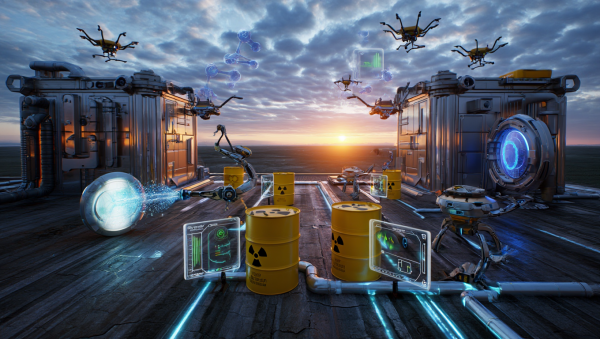
Uranium Trend: From Silent Surge to Strategic Fury
Jun 19, 2025
The uranium trend isn’t just ticking upward—it’s accelerating like a jet in afterburner. What began as a stealth rally has become a blistering move with momentum that’s catching even seasoned commodity traders off guard. The metal isn’t just rising—it’s ripping. And unlike in past cycles, it’s not drifting upward into resistance. It’s punching through it.
Now here’s the kicker: it’s not just the spot price of uranium that’s in motion. It’s everything around it—fuel cycle infrastructure, enrichment capacity, supply chain bottlenecks, and geopolitical nerves stretched to their limit. The uranium trend isn’t a one-dimensional move. It’s the ignition of a much bigger systemic rotation.
The Speed of the Surge
The metal just clocked one of its fastest multi-week rallies in over a decade. Uranium equities—names like Cameco, Kazatomprom, and even the smaller explorers—are lighting up screens like it’s 2006 again. What’s shocking isn’t just that prices are up—it’s how quickly they got there. Most technical analysts expected consolidation. Instead, we got liftoff. No sleepy stair-step pattern. No cautious buildup. This looks and feels like the beginning of a blowoff—but with the psychology of something more fundamental.
Could there be a pullback? Of course. No trend moves in a straight line forever. But betting on a sustained retracement right now is like trying to short a stampede. The pace has gone vertical—and that’s often a signal of something bigger in play. The technicals are playing catch-up. Volume is surging. Patterns are accelerating. This is not a normal cycle.
Beyond Charts: When Trends and Mass Psychology Align
You know our playbook. We never lean on technicals alone—that’s rookie thinking. The real edge lies where price action, sentiment, and macro cycles intersect. That’s the convergence we’re seeing now.
- The trend is up.
- The cycle is accelerating.
- Psychology is sticky.
- The pullbacks are shallow.
And the hands holding the supply? Stronger than ever.
Retail is barely involved yet. Institutional capital is starting to rotate. Nation-states are circling like hawks. That’s the setup you want before a real move goes thermonuclear.
The Real Shortage: It’s Not Just Uranium
Let’s go deeper. It’s not just about uranium oxide (U₃O₈) or yellowcake. That’s only part of the equation. The real choke point is enriched uranium—and the capacity to produce it.
To fuel most reactors, raw uranium has to be converted into uranium hexafluoride (UF₆), then enriched, typically into 3–5% U-235. That means conversion and enrichment capacity—not just mining—is now in demand. And here’s where it gets nasty: both are in short supply.
Western enrichment capacity has been starved for decades. After years of underinvestment and reliance on Russian enrichment (Rosatom still handles nearly 50% of the world’s enrichment needs), the West is scrambling to rebuild. But building enrichment plants isn’t like flipping a switch. It takes years, billions of dollars, and political will. Meanwhile, demand is screaming higher.
What’s rising fast isn’t just spot prices—it’s conversion pricing, SWU pricing (separative work units), and long-term contracting by utilities. The squeeze is multi-dimensional. It’s not just a uranium rally. It’s a fuel cycle firestorm.
Global Nuclear Demand Is Booming
Let’s bust the narrative: nuclear isn’t dying. It’s staging a renaissance.
* China plans to build 150 new reactors by 2035.
* India, Russia, Turkey, UAE, and Bangladesh are all scaling nuclear fleets.
* Even Europe is walking back anti-nuclear policies.
* Japan is rebooting reactors after a decade-long shutdown.
* The U.S., once the laggard, is suddenly serious about small modular reactors (SMRs) and fuel security.
This is what we call a structural demand boom. Not cyclical. Not speculative. Strategic. It’s driven by energy security, decarbonization goals, and a quiet but brutal recognition that renewables can’t carry the grid alone.
Wind and solar are intermittent. Batteries can’t store weeks of power. Natural gas is exposed to price volatility and geopolitical choke points. Nuclear? It’s dense, consistent, and—when done right—unmatched in long-term output. That’s why the demand isn’t just growing—it’s institutionalizing.
Resource Remobilization War: The Real Battle Is Ownership
We coined it: Resource Remobilisation War. And uranium is a frontline battleground.
This isn’t a traditional war—no bombs, no armies. It’s a war over value chains. Producing nations are done playing nice. No more digging, shipping, and begging for pennies. They want control from ground to grid. Enrichment, conversion, utility contracts—all of it. This isn’t just economic. It’s deeply psychological. It’s leverage. It’s identity. It’s revenge for decades of being squeezed in the margins.
Kazakhstan knows it. So does Niger. So does Canada.
And if you think the West can just “outsource” enrichment the way it did solar panels, you’re not paying attention. The geopolitical calculus around uranium is changing—and fast. One choke in conversion capacity, one hiccup in enrichment, and the entire nuclear supply chain seizes up.
This gives producers leverage. It gives traders opportunity. And it gives smart capital a hell of a narrative to run with.
Commodity Supercycle Reloaded: This Time, It’s Tactical
Look around. Uranium isn’t rising in isolation. We’re entering a phase where multiple commodities—copper, lithium, rare earths, oil, gas—are trending together. But uranium stands out. Why? Because it’s not just energy—it’s strategic control.
As the world fractures into economic blocs and supply lines get rewired, uranium becomes more than a metal. It becomes a geopolitical insurance policy.
And when that happens, markets behave differently. Pullbacks get bought faster. Volatility narrows. Sentiment becomes reflexive. Price momentum begets narrative momentum, which begets capital flows, which tightens the market further.
This is how “overbought” becomes the new normal. You’ll hear analysts call it frothy. You’ll hear funds call for caution. But the smart money understands: this is rotation, not speculation.
This is when trendlines go parabolic, when the laggards chase the leaders. When uranium stops being a trade and becomes a statement.
Final Take: Don’t Underestimate This Cycle
Don’t let the speed fool you into thinking this is a top. Speed is the symptom of realignment, not exhaustion. Demand is accelerating. Supply is tight. Enrichment is the wild card. And the psychology is only just waking up.
Most people are still treating uranium like a fringe trade. They’ll look back in six months and wonder how it got so far, so fast. You don’t have to be one of them.
This trend has legs. Probably years. Because when psychology, cycles, and geopolitics align, the outcome isn’t just price appreciation—it’s structural repricing.












